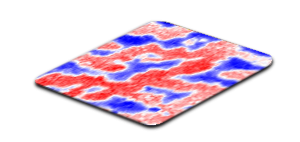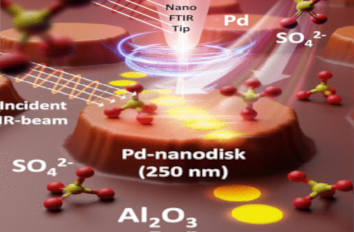
Inorganic Materials
oxides, minerals & ceramics
Inorganic nanomaterials have high surface area to volume ratio showing unique physical and chemical properties that are different from their bulk counterparts. For example, they may have different optical, electronic, magnetic, catalytic, and mechanical properties, which make them useful for a wide range of applications across various industries.
These materials are being studied using neaspec technology for their potential applications in fields such as electronics, energy, catalysis, biomedical imaging, drug delivery, and environmental remediation. To learn more about the recommended neaSCOPE microscope for these samples, visit the product pages indicated below.
APPLY FOR A TEST MEASUREMENT ON YOUR SAMPLE*
* In order to evaluate the capabilities of our technology & products, you may apply for a test measurement with your own sample. Sucessful test results significantly increase the approval chance of your grant application.
Samples/Research Materials

Extraterestrial Material
Extraterrestrial materials at the nanoscale can provide valuable insights into the formation, composition, and history of celestial objects. neaSCOPE users apply neaspec technologies to study chondrules (small spherical particles found in meteorites), identifying potential life forms in star dust, develop lightweight, super-strong materials for use in aerospace applications and learning about the nanoscale structure of moon rocks has provided insights into the volcanic activity that occurred on the moons billions of years ago.
Recommended product: IR-neaSCOPE+s

Phase Change Materials
Phase change materials can store and release thermal energy by changing their phase at a specific temperature. The applications of phase change materials include building insulation through energy-efficient smart windows, overheating protection of microprocessors or even improve thermal comfort by regulating the temperature of clothing, bedding, and other fabrics.
Recommended product: IR-neaSCOPE+s

Ceramics
Ceramics are widely used in many industries because of their unique properties, such as high melting points, low thermal expansion, high hardness, and chemical stability. The nanoscale properties of ceramics also make them useful in various applications ranging from biomedical to industrial and highlights the importance of materials science research in developing new and improved materials. For example, ceramic nanoparticles are used in coatings for cutting tools and turbine blades, making them more durable and long-lasting.
Recommended product: IR-neaSCOPE+s

Minerals
The utilization of minerals at the nanoscale has gained increasing attention in recent years due to their unique physical, chemical, and biological properties. neaSCOPE users can apply neaspec technology investigating iron oxide, titanium oxide, and zeolites for environmental remediation. Nanoclay particles, composed of layered silicates to reinforce composite materials such as polymers, ceramics, and metals. While nickel cobalt oxide are used as electrode materials in batteries for energy storage.
Recommended product: IR-neaSCOPE+s









